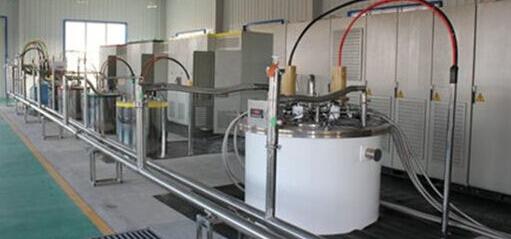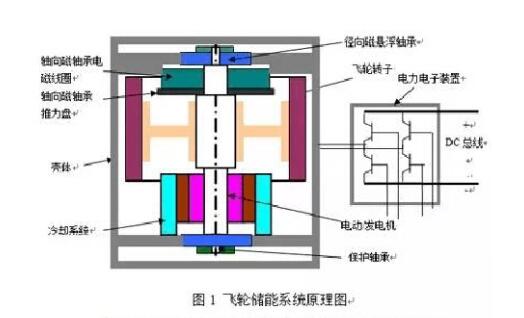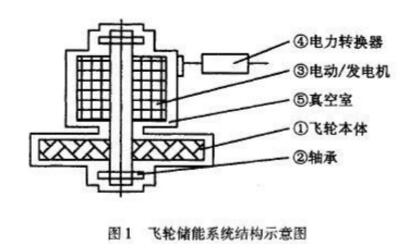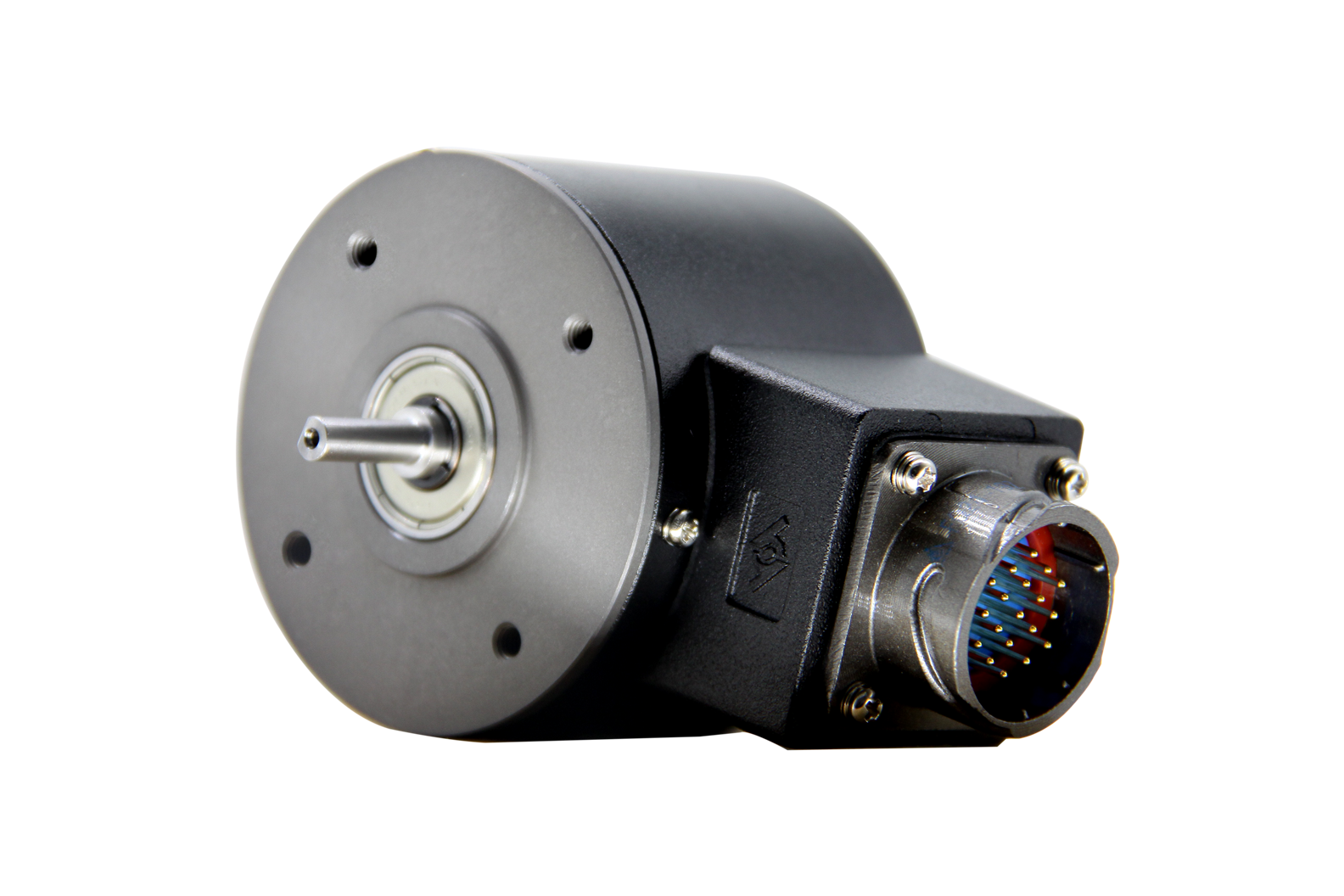The thought of energy storage in the flywheel was raised as early as one hundred years ago, but due to the constraints of technical conditions at that time, there was no breakthrough for a long time. It was not until the 1960s and 1970s that the NASA Glenn Research Center began using the flywheel as an energy storage battery on satellites. After the 1990s, due to breakthroughs in the following three aspects, the flywheel energy storage technology has brought more room for development.
(1) The appearance of high-strength carbon fiber composites (tensile strength up to 8.27 GPa) greatly increases the kinetic energy reserves per unit mass.
(2) The research on magnetic levitation technology and high temperature superconducting technology is progressing rapidly. The magnetic levitation and vacuum technology are used to minimize the friction loss and wind loss of the flywheel rotor.
(3) New advances in power electronics technology, such as breakthroughs in electric/generators and power conversion technologies, provide advanced means for the exchange of kinetic energy and electrical energy stored in flywheels. The energy storage flywheel is a high-tech mechatronics product in aerospace (satellite energy storage battery, integrated power and attitude control), military (high power electromagnetic gun), electric power (power peaking), communication (UPS), automobile Industrial (electric vehicles) and other fields have broad application prospects.

The flywheel energy storage system is an energy storage device for electromechanical energy conversion, which breaks through the limitations of chemical batteries and realizes energy storage by physical methods. Through the electric/power reciprocating two-way motor, the electrical energy and the mechanical kinetic energy of the high-speed running flywheel are mutually converted and stored, and the frequency modulation, rectification, constant voltage and different types of load interfaces are adopted.
During energy storage, the electric energy is converted by the power converter to drive the motor to run. The motor drives the flywheel to accelerate the rotation. The flywheel stores the energy in the form of kinetic energy, completes the energy storage process from electrical energy to mechanical energy conversion, and the energy is stored in the high-speed rotating flywheel body. After that, the motor maintains a constant speed until it receives a control signal for energy release; when the energy is released, the high-speed rotating flywheel drives the motor to generate electricity, and the power converter outputs the current and voltage suitable for the load to complete the mechanical energy. The energy release process of electrical energy conversion. The entire flywheel energy storage system enables the input, storage and output of electrical energy.
Advantages and disadvantages of flywheel energy storageFlywheel energy storage means that when energy is needed, the flywheel decelerates and releases the stored energy. Flywheel energy storage has a single technology in China (but the gap with foreign countries is more than 10 years). The difficulty lies in the development of new products with different functions according to different uses. Therefore, the flywheel energy storage power supply is a high-tech product but the original innovation. Sexuality is not enough, which makes it more difficult to obtain national research funding support.
Inadequacies: The energy density is not high enough, and the self-discharge rate is high. If the charging is stopped, the energy will be exhausted within a few to several tens of hours. Only suitable for some market segments, such as high quality uninterruptible power supplies.

A typical flywheel energy storage system consists of five main components: the flywheel body, bearings, motor/generator, power converter and vacuum chamber. In practical applications, there are many structures for flywheel energy storage systems. Figure 1 is a flywheel energy storage system in which a flywheel and a motor are integrated. The flywheel energy storage system is composed of a high-speed flywheel rotor magnetic bearing system, an electric/generator, a power conversion system, and a vacuum cover. Figure 1 is a schematic diagram of a flywheel energy storage system module.

The flywheel body is the core component of the flywheel energy storage system. The function is to improve the ultimate angular velocity of the rotor, reduce the weight of the rotor, and maximize the energy storage of the flywheel energy storage system. At present, carbon fiber materials are often used.
The performance of the bearing system directly affects the reliability, efficiency and longevity of the flywheel energy storage system. At present, the flywheel energy storage system used mostly adopts a magnetic levitation system, which reduces friction when the rotor of the motor rotates, reduces mechanical loss, and improves energy storage efficiency.
The conversion between the mechanical energy and the electric energy of the flywheel energy storage system is realized by the electric motor/generator and its control. The electric motor/generator integrates one component, and when the energy is stored, it is operated as a motor, and the electric motor is driven by the external electric energy. The flywheel rotor is accelerated to rotate to a certain set speed; when the energy is released, the motor is operated as a generator to output electric energy outward, and the flywheel speed continuously decreases. Obviously, low-loss, high-efficiency motor/generators are the key to efficient energy transfer.
The power conversion device is to improve the flexibility and controllability of the flywheel energy storage system, and to convert the output power (frequency modulation, rectification or constant voltage, etc.) into electrical energy that meets the load power supply requirements.
The main function of the vacuum chamber is to provide a vacuum environment and reduce the windage loss during motor operation.
Application of flywheel energy storage system1. Battery magnetic suspension flywheel energy storage UPS
(1) When the mains input is normal, or when the mains input is low or high (within a certain range), the UPS regulates and filters the mains through its internal active dynamic filter to ensure the load. The equipment provides high-quality power protection while charging the flywheel energy storage device, and the UPS uses the built-in flywheel energy storage device to store energy.
(2) When the mains input quality cannot meet the normal operation requirements of the UPS, or the mains input is interrupted, the UPS converts the mechanical energy stored in the flywheel energy storage device into electrical energy, and continues to provide high quality and uninterrupted supply to the load device. Power security.
(3) In the case that a problem occurs within the UPS, the UPS switches to the bypass mode through its internal static switch, and the utility provides direct power protection to the load device without interruption.
(4) When the mains input is restored to the power supply, or when the mains input quality is restored to meet the normal operation requirements of the UPS, the mode is immediately switched to the mode in which the mains supply is powered by the UPS, and the high quality and uninterrupted supply to the load device is continued. Power protection, and continue to charge the flywheel energy storage device.
2, moving car battery
At present, with the improvement of environmental protection awareness and the contradiction between global energy supply and demand, the development of energy-saving and environmentally-friendly vehicles using alternative energy sources to reduce environmental pollution is an important trend in the development of the world automobile industry. The automobile manufacturing industry has turned its attention to the development of electric vehicles. It can find a new type of battery with high energy storage density, short charging time and reasonable price. It is the key to whether electric vehicles can have greater mobility and compete with gasoline vehicles. The flywheel battery is clean, efficient, and fast charging and discharging. It does not pollute the environment and is widely valued by the automotive industry. It is expected that the 21st century flywheel battery will be a research hotspot in the electric vehicle industry.
3, intermittent power supply
The uninterruptible power supply is widely used in communication hubs, defense command centers, industrial production control centers, etc. because it can ensure uninterrupted power supply and ensure the quality of power supply. The current uninterrupted power supply consists of rectifiers, inverters, static switches and battery packs. . However, current storage batteries usually have conditions for operating temperature, operating humidity, input voltage, and depth of discharge. At the same time, the battery is not allowed to be turned off and on frequently. The flywheel has the advantages of large energy storage, high energy storage density, fast charging, unlimited charge and discharge times, etc., so it has a good application prospect in the field of uninterruptible power supply systems.
4, wind power system uninterrupted power supply
Wind power generation is difficult for wind power users due to unstable wind speed. The traditional approach is to install a diesel generator, but due to the special requirements of the diesel engine itself, it can be stopped within 30 minutes after starting. The wind is often interrupted for a few seconds, a few minutes. Not only the diesel engine starts frequently, but also affects the service life; and after the fan is restarted, the diesel engine acts at the same time, which will cause excess power. Considering that the energy stored in the flywheel is large. Fast charging, therefore, many foreign scientific research institutions have introduced energy storage flywheels into wind power generation systems. In the United States, the flywheel was introduced into the wind power generation system to achieve peak peaking. The power generation capacity of the flying turbine unit was 300 KW, and the energy storage capacity of the large-capacity energy storage flywheel was 277 KW per hour.
Rotary encoders are used as sensors for angle,position,speed and acceleration. We can offer incremental encoders and absolute encoders.

Absolute Encoder,Custom Encoder On Motor,Custom Optical Encoders,High Resolution Encoder
Yuheng Optics Co., Ltd.(Changchun) , https://www.yuhengcoder.com